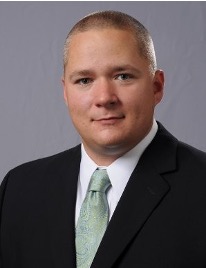Q. What does it mean to “design for healthier indoor spaces”?
A. When I think about designing for healthier spaces, my first thought is the health and wellbeing of people in the space. Having clean air reduces the risks of transmission of viruses. You also want to ensure you’re not introducing any harmful byproducts or other contaminants/toxins that may impact the health of the occupant. Moving beyond indoor air quality, we know lighting and acoustics can impact the wellbeing and comfort of occupants in the space. Many people spend a majority of their time indoors, so it is important to have a space that is safe and comfortable.
Q. What kinds of things are important to consider when designing for healthier spaces?
A. With the current pandemic, indoor air quality is top of mind. Having clean air can reduce the risks of transmission within indoor spaces. It is also important to look at other contaminants that may impact employee productivity or overall comfort in a space. Thermal comfort is also important. Optimal temperature and relative humidity settings can lead to a more comfortable environment, as well as help improve indoor air quality. Lighting and acoustics are also important considerations when designing a space. Studies have shown increased productivity and overall happier occupants with optimal lighting and acoustics (super quiet is not always the best approach!).
Q. Why is asking “what one technology or practice has the most potential impact” the wrong question?
A. There is not a silver bullet when addressing IEQ or IAQ issues. Every building is different, and every customer is different. It is important to assess each building to determine existing conditions of the space. It is also important to understand key factors from the customer (efficacy against pathogens, energy efficiency, mold/mildew mitigation, improved productivity, comfort issues, etc.). Most projects require a layered approach to meet the unique needs of the customer and their building’s current state.
Q. What are the right IEQ-related questions to ask before designing a project?
A. It is important to understand the goals of the customer and the current state of the building before designing a project. All of the IAQ/IEQ solutions in Trane’s portfolio show some level of efficacy against certain contaminants under certain conditions. It is important to understand the buildings conditions and the desired outcome to better align potential solutions for the project.
Q. What are good conversation starters for Engineers to have with Builders or Facility Managers?
A. I think understanding current challenges in the space is a good place to start. Are occupants happy with the current environment? Are there regular complaints from occupants or facility managers (mold, odor, thermal comfort, energy or maintenance costs, etc.)? Before diving in with solutions, it is good to first understand any challenges and potential opportunities for improvement.
Q. What, if any, surprising misconceptions about IEQ design have you heard? What is/are your recommendations to tackle this/these misconceptions?
A. Many people think incorporating IEQ or IAQ strategies will significantly increase operating costs. We’ve heard customers say energy bills have increased 30-40% (some even saying bills have doubled) by incorporating ASHRAE ventilation recommendations. However, a well designed IAQ/IEQ strategy may help reduce costs or increase productivity and revenue. With LED lighting, we are learning more how employee productivity is increased when aligning light colors with the circadian rhythm. We also know some IAQ technologies show significantly improved IAQ without the burden of adding increasing outdoor air. If looking at direct costs of an improved HVAC system, then costs can be a challenge. However, we need to look at the overall impact of the project to understand the financial impact.
































































































